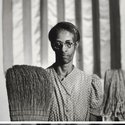Inc Wednesday March 27, 2024
YouTube has introduced a new tool in Creator Studio to help you label the altered or Ai content, notes The Verge. And the video platform expects creators must use it: The AI confirmation labels will appear in the expanded description or on the video player itself. You'll then need to check a box or otherwise indicate if the content makes a real person appear to say or do something they didn't say or do, alters footage of a real event or place, or generates a realistic-looking scene that didn't actually occur, adds Inc.
Read the full Story >>
By
David Schonauer Wednesday March 27, 2024
Born into poverty and segregation in Fort Scott, Kansas, in 1912, Gordon Parks taught himself photography and in 1942 won a fellowship that brought him to Washington, D.C.. In the nation's capital, a
city steeped in racism, he made his iconic image of government worker Ella Watson, which he later titled "American Gothic." The photo, which represents Parks's coming to terms with a place … Read the full Story >>
The New York Times Tuesday March 26, 2024
David Breashears, a mountain climber and cinematographer who reached the summit of Mount Everest five times—once for a 1998 film that became the highest-grossing IMAX documentary ever—died on March 14 at his home in Marblehead, Mass, notes The New York Times. He was 68. The cause of his death was not released by his family. By the time Breashears first reached the summit of Everest in 1983, he had developed a second career as a cinematographer. In 1996, he and his team lugged a specially built IMAX camera up the mountain for the film Everest.
Read the full Story >>
CNN Tuesday March 26, 2024
Weeks after the Russian invasion of Ukraine, British photographer Polly Braden flew to Moldova, which shares a border with Ukraine, to begin a project about women forced to flee the war. “It felt important to record what was going to happen to [them]. They were going to have to find housing, schooling, jobs… to build new lives,” she tells CNN. “It also meant they suddenly became refugees — they might have been teachers, lawyers, important people in their community — what was that going to look like for them?”
Read the full Story >>




